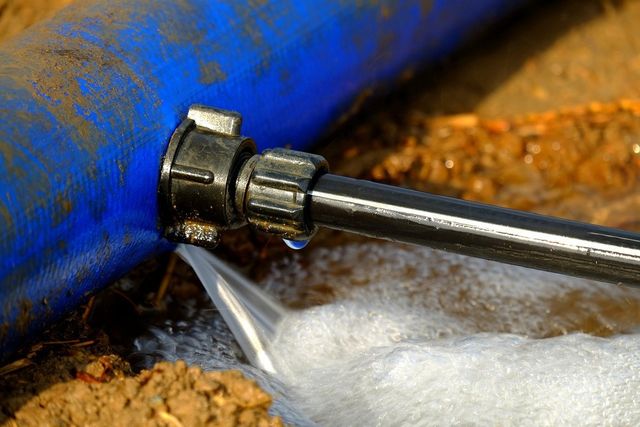How to Check If Your Home Has a Hidden Leakage
How to Check If Your Home Has a Hidden Leakage
Blog Article
Are you interested in selective information concerning Locating water leaks?

Early detection of dripping water lines can alleviate a potential calamity. In addition to conserving you money, it will decrease the aggravation and also frustration. The minute you locate a leakage, calling your plumber for fixings is the best solution. Some little water leaks may not be visible. Below are some hacks that aid if you can not find it with your nude eyes.
1. Analyze the Water Meter
Every house has a water meter. Checking it is a guaranteed way that assists you uncover leakages. For starters, switch off all the water sources. Guarantee no one will certainly purge, utilize the faucet, shower, run the washing equipment or dishwasher. From there, most likely to the meter and watch if it will change. Given that no one is utilizing it, there should be no motions. That shows a fast-moving leakage if it moves. Furthermore, if you identify no changes, wait a hr or more and inspect back once more. This indicates you may have a slow leak that might even be below ground.
2. Check Water Usage
Examine your water costs as well as track your water usage. As the one paying it, you should observe if there are any type of disparities. If you identify sudden changes, in spite of your usage coinciding, it suggests that you have leakages in your plumbing system. Remember, your water bill should fall under the exact same array on a monthly basis. A sudden spike in your costs shows a fast-moving leak.
A steady rise every month, also with the exact same practices, shows you have a slow-moving leak that's additionally gradually intensifying. Call a plumber to completely inspect your residential or commercial property, specifically if you really feel a cozy area on your flooring with piping below.
3. Do a Food Coloring Test
When it comes to water intake, 30% comes from bathrooms. If the color in some way infiltrates your dish throughout that time without flushing, there's a leakage between the tank as well as bowl.
4. Asses Exterior Lines
Don't neglect to inspect your exterior water lines as well. Examination faucets by connecting a garden hose. Should water leak out of the connection, you have a loose rubber gasket. Replace this and make sure all links are tight. It will aid get it skillfully checked out and also preserved each year if you've got a lawn sprinkler system. One small leak can lose lots of water and surge your water expense.
5. Examine the situation and evaluate
Homeowners need to make it a behavior to inspect under the sink counters and even inside closets for any type of bad odor or mold development. These two red flags show a leak so prompt interest is needed. Doing regular evaluations, even bi-annually, can save you from a significant problem.
If you know your house is already old, keep a careful eye on your heating units, tubes, pipes and so on. Check for stainings and weakening as many pipes and also home appliances have a life span. They will certainly also naturally wear away as a result of deterioration. Do not wait for it to intensify if you suspect leaking water lines in your plumbing system. Call a specialist plumber as soon as possible so you don't wind up with a terrible mess in your house.
Early detection of dripping water lines can reduce a prospective catastrophe. Some small water leakages might not be noticeable. Examining it is a guaranteed way that assists you find leakages. One little leak can squander tons of water as well as surge your water expense.
If you believe dripping water lines in your plumbing system, don't wait for it to intensify.
WARNING SIGNS OF WATER LEAKAGE BEHIND THE WALL
PERSISTENT MUSTY ODORS
As water slowly drips from a leaky pipe inside the wall, flooring and sheetrock stay damp and develop an odor similar to wet cardboard. It generates a musty smell that can help you find hidden leaks.
MOLD IN UNUSUAL AREAS
Mold usually grows in wet areas like kitchens, baths and laundry rooms. If you spot the stuff on walls or baseboards in other rooms of the house, it’s a good indicator of undetected water leaks.
STAINS THAT GROW
When mold thrives around a leaky pipe, it sometimes takes hold on the inside surface of the affected wall. A growing stain on otherwise clean sheetrock is often your sign of a hidden plumbing problem.
PEELING OR BUBBLING WALLPAPER / PAINT
This clue is easy to miss in rooms that don’t get much use. When you see wallpaper separating along seams or paint bubbling or flaking off the wall, blame sheetrock that stays wet because of an undetected leak.
BUCKLED CEILINGS AND STAINED FLOORS
If ceilings or floors in bathrooms, kitchens or laundry areas develop structural problems, don’t rule out constant damp inside the walls. Wet sheetrock can affect adjacent framing, flooring and ceilings.
https://www.servicemasterbyzaba.com/blog/how-to-detect-water-leakage-in-walls/

I'm certainly very fascinated with Finding hidden leaks and I am praying you enjoyed reading my blog posting. Sharing is nice. You never know, you may be doing someone a favor. Thanks so much for going through it.
Report this page